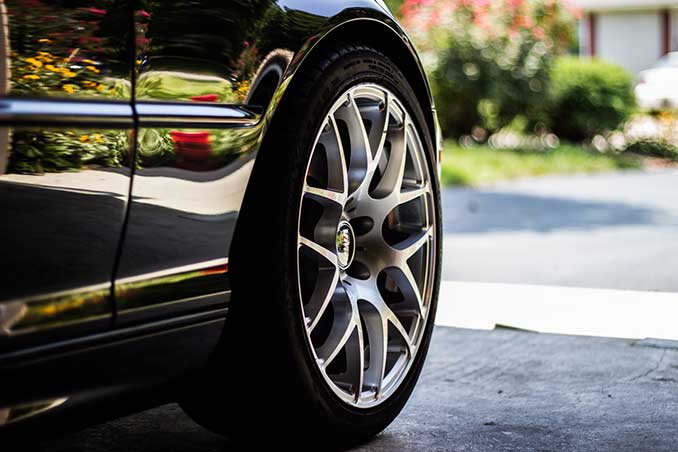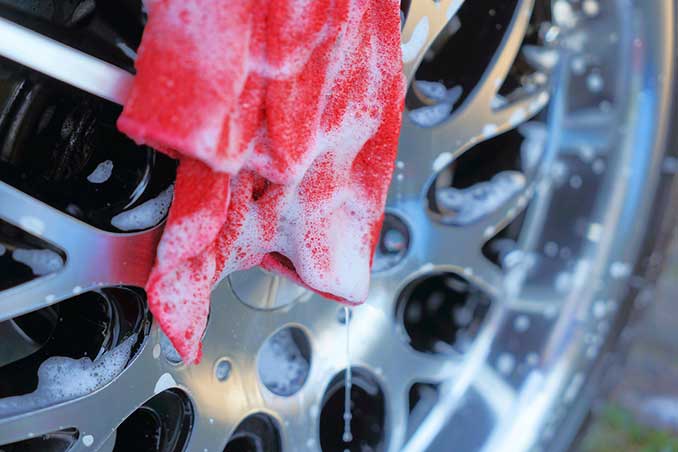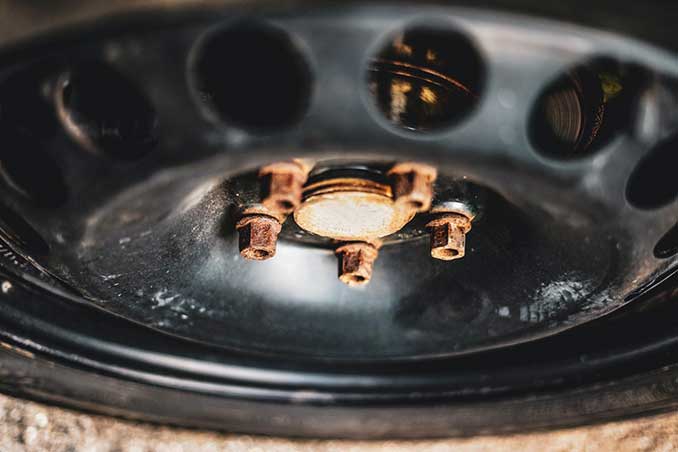Maintain car rims technically and visually correct

Regardless of whether your rims are simple and practical or an optical highlight on your vehicle: one regular maintenance is essential if you want to avoid long-term damage. In addition, shiny rims simply look better in the sun. In order to properly care for your rims, you should not only know how best to proceed when cleaning, but also what tricks you can use to quickly and easily remove small scratches and rust spots.
Why is wheel care so important?
Of course, clean rims are simply more attractive than wheels that are dirty and marked by salt or even rust. But regular cleaning and quick cleaning is also important for the durability of the rim Treatment of paint damage or rust spots is essential. In addition, the removal of stubborn dirt and brake dust becomes more and more complicated over time.
The dark brake dust burns deeper and deeper due to the high temperatures to which the rim is sometimes exposed and can eventually only be removed with aggressive agents. In the worst case, however, they damage the material of the rim.
This is how you clean your rims professionally

Cleaning the rims is just as important as regularly washing the car itself. First of all, it should be clear what type of rim you want to work on. Aluminum rims, which are used by many people especially during the summer tire season, are a bit more sensitive than the often robust steel rims.
We recommend cleaning both with a high-pressure cleaner first, which removes coarser dirt, dust and road salt that has stuck to the surface. Then you should apply a wheel rim cleaner, which can be purchased cheaply in hardware stores, but also in car dealerships. One short exposure time is usual, in which the grease and dirt dissolving power of the cleaner can unfold. However, make sure not to exceed the exposure time specified on the spray bottle or can (usually around 15 minutes), otherwise, depending on the aggressiveness of the agent, the rim surface may be damaged.
In general, work with warm water, as this makes it much easier to remove greasy and stubborn dirt in particular.
Alternatively, a simple all-purpose cleaner for household use can also be used. However, keep in mind that you should never use products that contain acids, as these can permanently damage the rim material. Instead, you should choose a cleanser that is explicitly capable of dissolving grease.
Then use a microfiber cloth or, for more stubborn dirt, a soft brush to remove the dirt with light pressure and circular movements. Avoid using hard-bristled brushes, steel sponges or similarly aggressive cleaning aids. Scratches and damage to the paintwork can otherwise be unsightly consequences.
From time to time you should also clean your rims from the inside, especially during or after the winter and thus the rust-promoting road salt season. But not just salt, too Burnt-in brake dust can permanently damage the rim. To clean the inside, remove the rim and also clean the back as described. A slightly longer exposure time may help to effectively remove even stubborn dirt.
At the end of the procedure, it depends on the type of rim. Steel rims can then be rinsed off and are ready for use again. At best, you should not use simple tap water for the final rinse, but rather osmosis water or simple rainwater. Therewith prevent the formation of unsightly limescale stains. Only before a longer storage, for example over the summer, can a rim seal also make sense. This is applied with a clean and dry microfiber cloth after the rims have been allowed to dry completely. For alloy wheels however, one is recommended sealing in general, to protect the somewhat more sensitive surface.
You should pay attention to this special feature with painted rims
Specially painted rims can quickly suffer from the wrong cleaning agents and cleaning that is too aggressive. But salt and dirt are also more likely to affect them, which is why it is important for you to find a good middle ground. A is recommended for this Slightly shorter cleaning interval, but with the mildest possible agents. The use of brushes should also be avoided entirely and a soft cloth should be used to remove the dirt instead.
These home remedies have proven themselves for cleaning rims
Instead of buying special cleaners in specialist shops or hardware stores or ordering them online, you can often do the same resort to simple means that can be found in most households. For example, oven cleaner is a great alternative to rim cleaner and is particularly effective at removing brake dust from sensitive rims.
If there are unsightly tar spatters on your wheels, you can also use nail polish remover containing acetone to remove them, provided the wheels are simple aluminum or insensitive steel rims. However, make sure to work very sparingly, quickly and selectively to remove all residues immediatelyto avoid damaging the material. In the case of painted rims, a corresponding treatment should generally be avoided.
Another home remedy trick for particularly stubborn stains or very filigree rims with narrow spoke spaces is to use a toothbrush with toothpaste. What sounds strange at first is actually a tried and tested means of getting rid of brake dust residues. To do this, rub a mild toothpaste without abrasive particles on the appropriate area with circular movements and slight pressure and leave the paste on for a few minutes. Then rub with a cloth and you can look forward to a completely clean rim.
Rim repairs: What is allowed and what is not?

Not all tires are equipped with a rim rib, which protects against scratches and dents on the rim as a result of curb bumps or pothole encounters. Such weak points are then a perfect breeding ground for rust, which can quickly attack the entire rim. To prevent such corrosion, you should Treat small scratches and paint chips as quickly as possible. To do this, use an appropriate repair kit that you can get online or in specialist shops. Polishing often helps with particularly small and inconspicuous scratches. Any rust that has already formed can be combated with a rust converter.
But be careful: If the damage is deeper than a millimeter, repairs are often not permitted. If possible, contact a TÜV-certified repair service, who processes the rim with a special rotary grinding process and thus repairs it without impairing its safety and driving properties. Otherwise it can happen that your rims are no longer allowed on the road.
